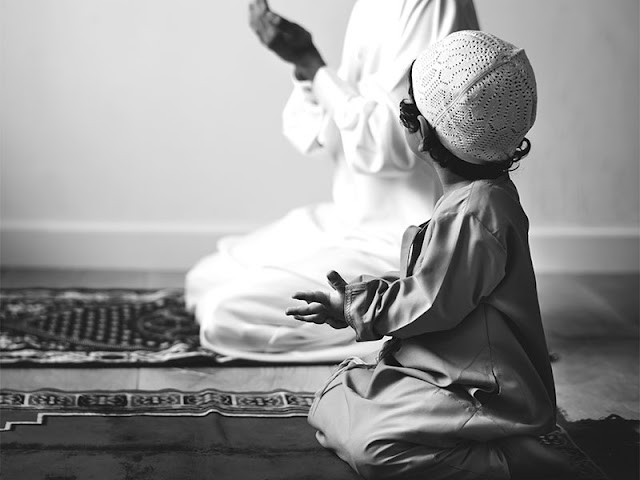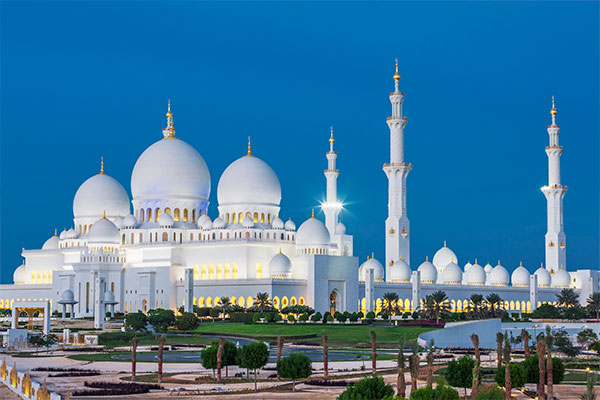In the rich tapestry of Islamic heritage, there exist sacred places that resonate with profound spiritual significance for Muslims worldwide. These sites are not only religious landmarks but also repositories of history and culture. As we embark on this exploration, we delve into the essence of the 7 Holiest Sites in Islam, uncovering the spiritual allure that draws millions of believers each year.
1. Kaaba (Masjid al-Haram): The Spiritual Epicenter
Our journey begins with the pulsating heart of Islam, the Kaaba, nestled in the holy city of Mecca, Saudi Arabia. A cubic structure draped in a black silk and gold curtain, the Kaaba holds a unique place in the hearts of Muslims. It is the focal point of daily prayers, symbolizing unity and devotion. Pilgrims from every corner of the globe converge here during the annual Hajj pilgrimage, circumambulating the Kaaba in a ritual known as Tawaf. The very cornerstone of Islamic worship, the Kaaba stands as a testament to the oneness of Allah and the interconnectedness of the Muslim Ummah.
2. Masjid al-Nabawi (The Prophet's Mosque): Sanctuary of Tranquility
Our journey now takes us to the city of Medina, where the Prophet's Mosque, Masjid al-Nabawi, beckons with its serene beauty. Serving as the final resting place of the Prophet Muhammad, peace be upon him, the mosque radiates an aura of tranquility and spirituality. The green dome above the Prophet's tomb is an unmistakable landmark, and the sprawling courtyards accommodate thousands of worshippers. Masjid al-Nabawi's significance extends beyond its architectural grandeur; it is a symbol of unity and a reminder of the profound love Muslims hold for the Prophet.
3. Al-Aqsa Mosque: Gateway to the Divine
Transitioning to the historic city of Jerusalem, Al-Aqsa Mosque graces the sacred landscape. As mentioned in the Quran, Al-Aqsa holds a special place in Islamic history. It is believed to be the site where the Prophet Muhammad embarked on his Night Journey and Ascension (Isra and Mi'raj). The mosque, with its silver-domed structure, invites worshippers to connect with the divine and partake in the spiritual legacy of Islam. Despite the challenges the region faces, Al-Aqsa remains a symbol of resilience and unwavering faith.
4. Dome of the Rock (Qubbat al-Sakhrah): A Gilded Marvel
Staying in Jerusalem, we encounter the iconic Dome of the Rock. Though not a mosque, its golden dome and intricate mosaics make it one of the most visually striking landmarks in Islam. Believed to be the site of the Prophet Muhammad's Night Journey, the Dome of the Rock serves as a reminder of the miraculous events in Islamic history. The structure's harmonious blend of Islamic architecture and intricate design captivates visitors, creating a lasting impression of the majesty of Islam.
Visit: tips for solo travelers
5. Mount Arafat (Jabal al-Rahmah): The Climax of Hajj
Our journey now shifts to the outskirts of Mecca, where the granite hill of Mount Arafat rises prominently. This site is intimately linked to the Hajj pilgrimage, the fifth pillar of Islam. Pilgrims ascend Mount Arafat during the peak of Hajj, standing in prayer and contemplation. It is here that Prophet Muhammad delivered his Farewell Sermon, a momentous event etched in Islamic history. The collective gathering on Arafat symbolizes the unity of the Muslim Ummah, transcending geographical and cultural boundaries.
6. Mina: The Symbolic Stoning Ground
Close to Mecca lies the valley of Mina, a site integral to the Hajj pilgrimage. Pilgrims spend part of their Hajj rituals in Mina, engaging in the symbolic stoning of the Devil by throwing pebbles at three pillars. This ritual symbolizes the rejection of evil and the triumph of faith. Mina's significance lies in the shared experience of millions of pilgrims who converge here annually, reinforcing the principles of sacrifice, purification, and devotion. Experience the sacredness of Umrah like never before with our meticulously planned Umrah tour packages, blending convenience, comfort, and the essence of spiritual fulfillment.
7. Muzdalifah: The Night of Reflection
Our journey concludes in Muzdalifah, a vast open plain that pilgrims visit during Hajj. It is here that they spend the night, engaged in prayers and collecting pebbles for the ritual of stoning the Devil in Mina. The simplicity of Muzdalifah, coupled with the collective reflection of pilgrims, creates a powerful atmosphere of spiritual connection. The rituals performed here emphasize the fundamental principles of Islam—submission, humility, and devotion to Allah.
Visit: complete guide to umrah rituals
Conclusion:
In the kaleidoscope of Islamic spirituality, these 7 Holiest Sites stand as beacons of faith, unity, and historical legacy. Each site tells a unique story, woven into the fabric of Islam, and draws millions of believers seeking spiritual enlightenment. From the sacred precincts of the Kaaba to the tranquility of Masjid al-Nabawi, the historical significance of Al-Aqsa, the awe-inspiring Dome of the Rock, the symbolic grounds of Mount Arafat, Mina's ritualistic importance, to the reflective plains of Muzdalifah—these sites collectively embody the essence of Islam.
Embarking on a pilgrimage to these sacred sites is a transformative journey, a testament to the enduring strength of the Islamic faith. As we navigate the intricacies of these spiritual landmarks, we are reminded that the essence of Islam transcends time and space, uniting believers in a shared devotion to Allah. The 7 Holiest Sites in Islam encapsulate the spiritual richness of the Islamic tradition, beckoning believers from diverse backgrounds to partake in the collective tapestry of faith and devotion.



Comments
Post a Comment